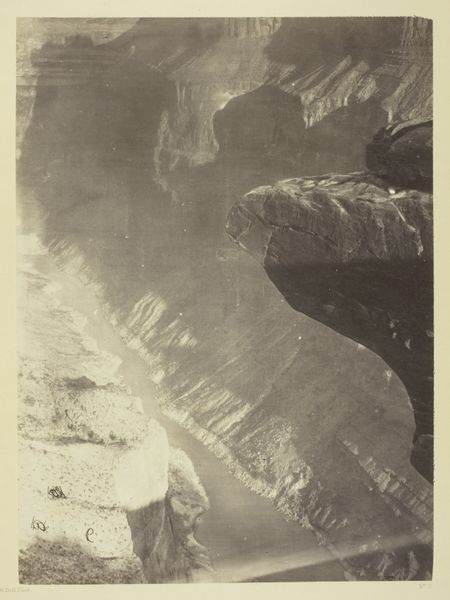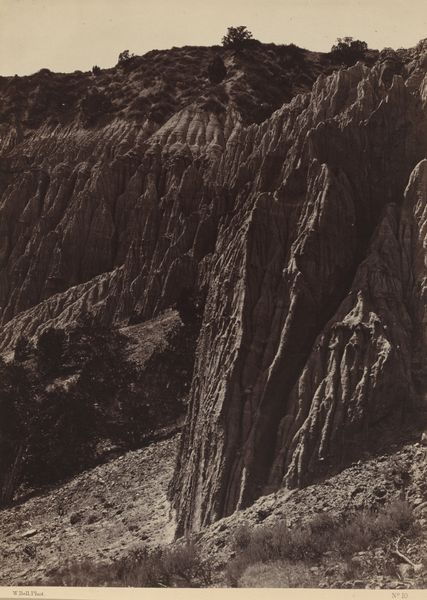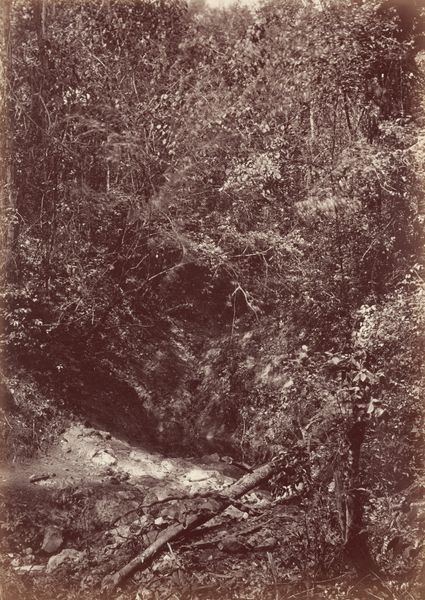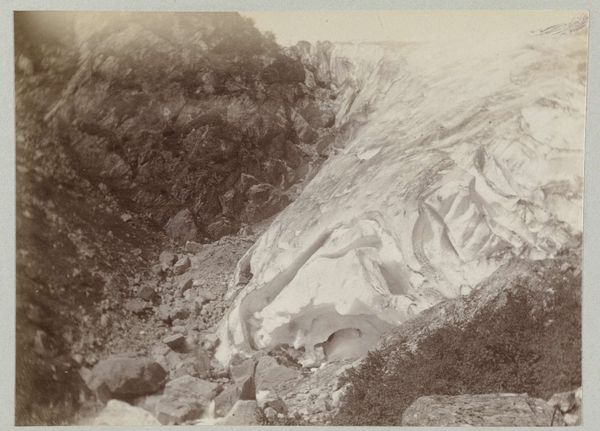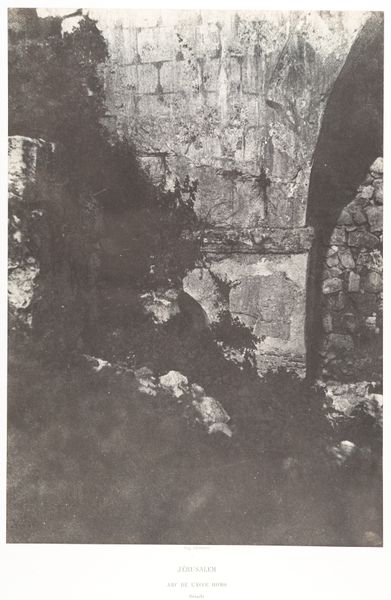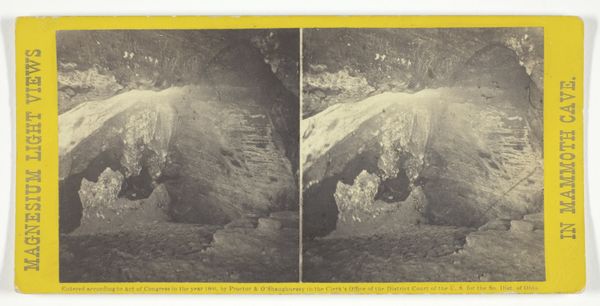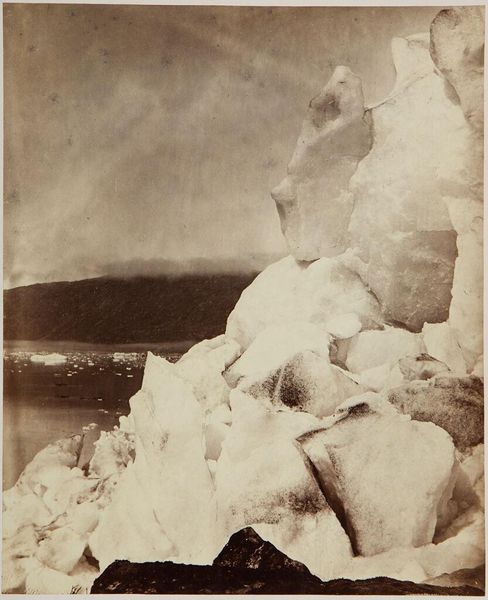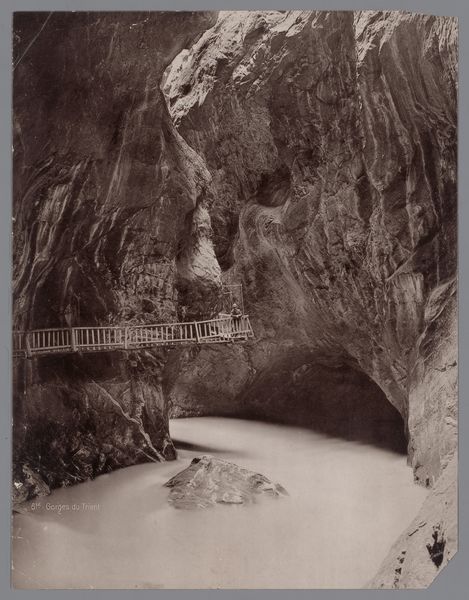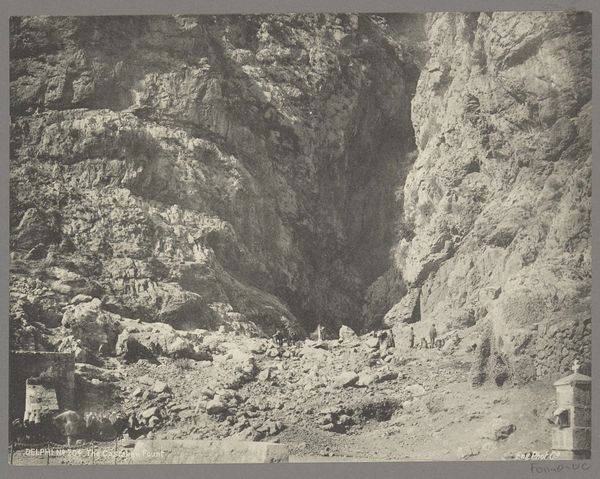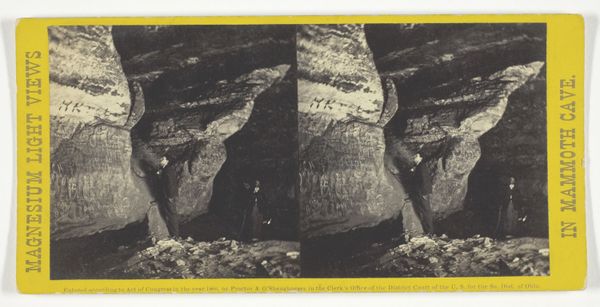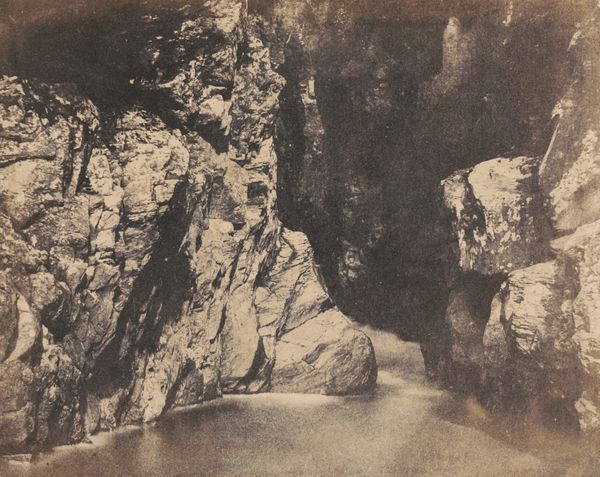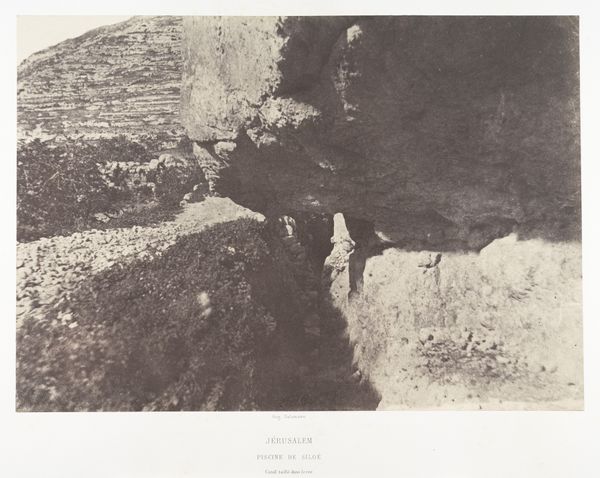
Looking South into the Grand Cañon, Colorado River, Sheavwitz Crossing 1872
0:00
0:00
photography
#
landscape
#
photography
#
hudson-river-school
#
realism
Dimensions: image: 27.4 x 20.4 cm (10 13/16 x 8 1/16 in.) mount: 50.7 x 40.5 x 0.1 cm (19 15/16 x 15 15/16 x 1/16 in.)
Copyright: National Gallery of Art: CC0 1.0
William Bell made this photograph of the Grand Canyon using the wet collodion process. This involved coating a glass plate with chemicals, exposing it in the camera while still wet, and then developing it immediately. Consider the material qualities of this photograph. The cool, smooth glass plate supports a delicate emulsion of silver particles, capturing the textures of the canyon walls. The process demanded meticulous preparation and timing, as the plate had to remain wet throughout. This meant a portable darkroom was essential, adding to the labor of the expedition. Bell was employed by the U.S. Geographical Surveys West of the 100th Meridian, part of the effort to map and claim the West. In this context, the photograph’s beauty is not the whole story. It also stands as a testament to industrial-era ingenuity and a tool of territorial expansion, entwined with the labor and resources required to subdue the landscape.
Comments
No comments
Be the first to comment and join the conversation on the ultimate creative platform.
